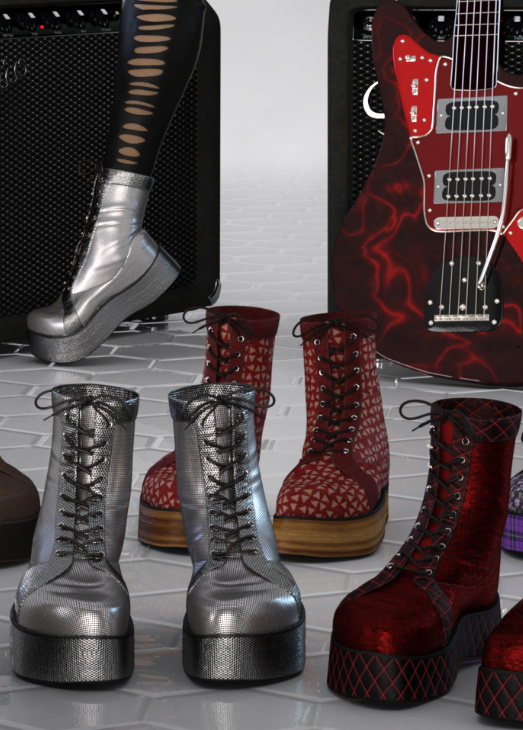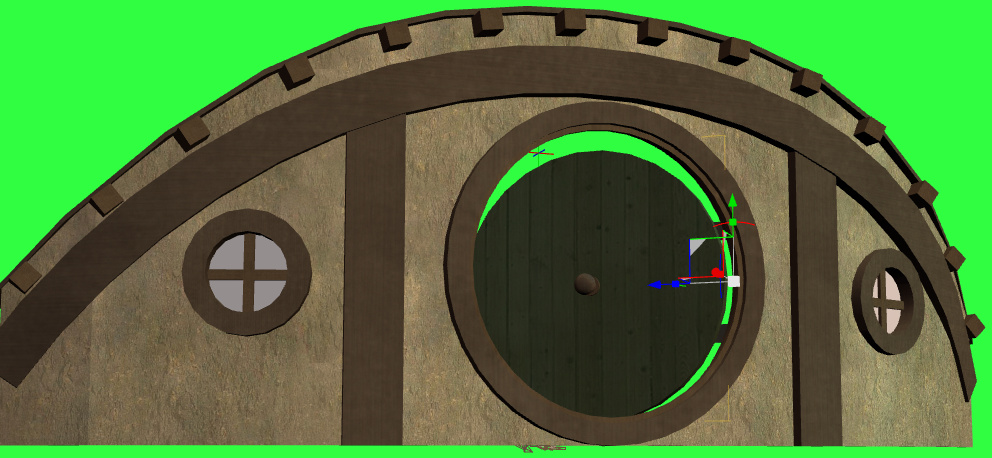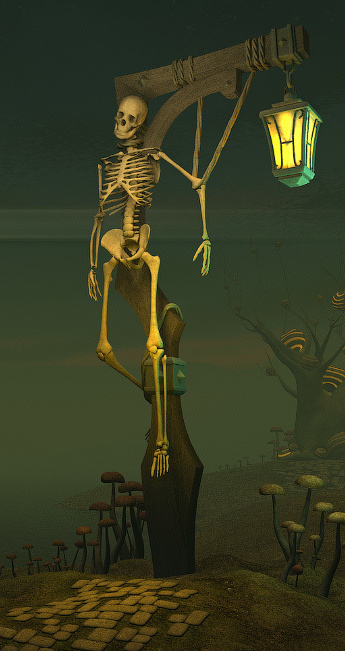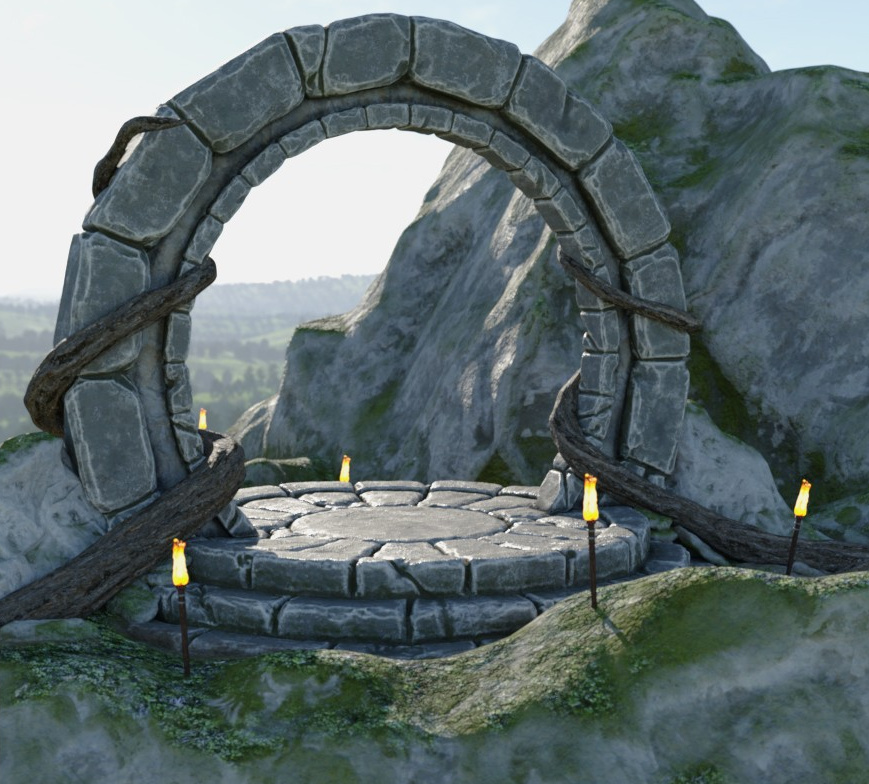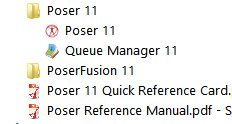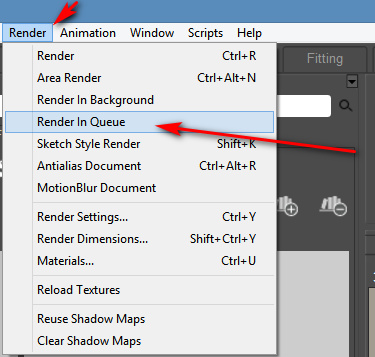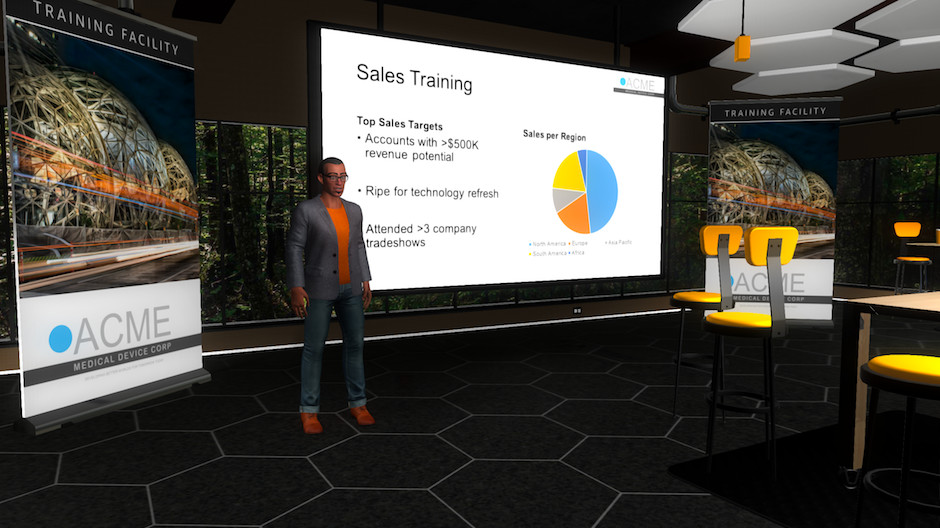Need snow in your Poser scene for Christmas? Snarlygribbly’s free Snow Machine 2.3 works in Firefly and Preview. Also in Sketch, though it tends to get rather ‘lost in the shuffle’. The snow is really easy to apply, just choose your settings (depth, colour, reflectivity etc) and watch the snow appear on your prop or even all across your scene…
Category Archives: 3D Utilities
Release: P3DO Pro 2.7 – adds DAZ indexing
The new P3DO Pro 2.7 was released a few days ago. One of several third-party indexers and content-managers for for Poser, P3DO Pro now has a DUF parser, for a partial indexing of the newer type of DAZ Studio files. P3DO Pro costs $25 for a two-year licence.
Update: The licence is a little confusing, but the maker clarifies it in a comment to this blog…
“P3DO keys don’t expire. Once you have acquired a key you will be able to use that version without duration limit. It is the ability to upgrade to a newer version which is not possible after a given time. Those two years you are referring to is the minimal time with free upgrades [to the user].”
P3DO Pro’s main rival PzDB 1.3 had partial DAZ indexing some years ago, along with iClone and Vue items. The PzDB licence never expires and 1.3 is currently on a discount at $56. However, if you only need a vast Poser runtime indexing then I’d suggest 1.2 is the better and perfectly good option, and it’s also significantly cheaper at $32.
If you can’t afford either, take a look at the free Everything.
BodyPix 2.0
Google has released the free BodyPix 2.0. This offers automatic identification of people against a relatively noisy background, and then spots and tracks each person’s twenty-four body parts. It then segments, ID’s and colours each body-part. It can do this even while being fed around 20-25 frames per second, on fairly standard hardware such as an iPhone.
Version 2.0 adds “multi-person support and improved accuracy”.
They also offer the sister-software PoseNet, enabling a basic emulation of what a Kinect does but via standard Webcams…
both BodyPix and PoseNet can be used without installation and just a few lines of code. You don’t need any specialized lenses to use these models — they work with any basic webcam or mobile camera. And finally users can access these applications by just opening a url. Since all computing is done on device, the data stays private. For all these reasons, we think BodyPix is easily accessible as a tool for artists, creative coders, and those new to programming.
So… how to plug this stuff into a nice little DAZ/Poser-friendly Webcam utility? One that, at the flick of a drop-down menu, will happily real-time puppet and animate any stock figure from an Aiko 3 up to a G8 or La Femme?
Dimension3D scripts – free Poser 11.2 fix available
If you run the latest Poser 11.2.x., there are a couple of third-party Poser scripts that won’t work because… “unexpected version of Poser”, or gnomic error-messages to that effect.
All my existing scripts worked fine after the 11.2.x. update, so I didn’t need to investigate a fix. But then last week I purchased Dimension3D’s $9 eXtended Access. I found it was one of the affected script utilities.
But I’m pleased to find that it’s now fixed. Poser wizard SnarlyGribbly has kindly created a small AVFix script. It’s available free at the Dutch PoserLounge site, and works fine. (That page and .zip are now also archived to Archive.org, for safekeeping).
The installation instructions for AVFix are clear and straightforward. To help jog my memory in future, I installed the fix to a folder named “Snarlygribbly – fix Poser 112 errors” rather than simply “Snarlygribbly” as suggested. The fix script still worked fine.
Once installed I… 1) run the AVFix once, then 2) start my new ‘XA – Toolbar’. I find the fix will also enable the launch of the ‘XA – Content Library’ in the same way, though I use PzDB these days. Dimension3D’s Extended Shader Manager does not need the fix. The fix is also said to cure the Reality plugin launch problem, and will presumably do until the new open-source Reality version arrives which supports Poser 11.2.x or higher.
I’ve updated my Python scripts for Poser 11 page, with a link to the fix.
OpenGL 4.2 to 4.5
News of U-Render for C4D started me wondering about making a possible move from my current OpenGL 4.2 to OpenGL 4.5. This led me to finally wrangle with upgrading my GPU’s native display drivers. I succeeded.
My obvious initial choice was to upgrade via the Windows Device Manager, but as usual it “knows nurthing…” about new driver updates. Better safe than sued.
But I found that AMD itself provides a handy auto-detection and drivers-download utility. This offered me a clean uninstall and an updated driver. A grindingly slow uninstall, download and update eventually took me from 2013 drivers, to much newer drivers from summer 2019.
Which all means that my GPU now runs OpenGL 4.5 (292 ext). Great.
I then tested the OpenGL Preview anti-aliasing and rendering in Poser 11.2, and it still runs fine under the updated version of OpenGL. As a side-effect I can now launch Blender 2.8, which I couldn’t before.
Apple Mac users are apparently forever stuck with OpenGL 4.1, since Apple is no longer supporting or updating it, and will abandon it altogether when they launch their new OS in Autumn/Fall 2020.
New content for DAZ and Poser, September 2019
It’s time for another pick of the month’s new 3D content releases, with a focus on DAZ Studio, Poser and Vue content. As usual I’m not featuring freebies that don’t offer commercial use. The CG Trader store timed out on me yet again, so they don’t feature here. No great loss, as they seem to be loosing the race with the new ArtStation store.
Science-fiction:
Urban Future 7 by Stonemason. A big quality scene with a great many camera opportunities, as usual from Stonemason. Shown here without textures, so you can see the mesh detailing.
Reptiloid Deepspace Hunter as an .OBJ only.
Rule them all with the Hover Throne for Poser. There’s also a new 17th century Royal Throne canopy that might be adapted to make it a futuristic match. Gotta keep the rain off your billion-dollar Hover Throne!
Steampunk:
Blunderbuss flintlocks for Poser and DAZ with high detail.
Vintage Weather Predictors (fluid barometers) for Poser and DAZ Studio.
Cape and skirt in Marvelous Designer, a merchant resource source-file for just $2. The same seller also has trousers in a similar style. I’m assuming this is not too close to being fan-art from some Japanese anime.
A free lamp, with a valvepunk look. Would also suit a stylish mad-scientist lab.
Clothing and wardrobes:
Le Vestiaire a complete Art Deco style wardrobe and dressing room, with Egyptomania theatre-style dressing table. For DAZ Studio, and it requires the Modular Dressing Room.
Related, and possibly an annexe room for the Vestiaire, is the new Mirror Rooms.
A free morphing Hat prop for La Femme, the flagship Poser female character.
Free Autumn/Fall Long Boots for La Femme.
dForce Halter Mini Dress for Genesis 8 Female has a top part that could be matched with suitable dark trousers (pants) for a more business-office look, with the high neck of the top offsetting the mundane ‘office look’.
Characters and poses:
New at CGBytes, the unusual Moody, Sulky and Depressed for G3 and G8, in DAZ Studio.
See also the new Z Utility Simply Bored Poses and Expressions for Genesis 3 and 8.
Liven up your spoiled and sulky kids with the free Rotting Zombie for Poser, based on a combo of legacy free-bundle characters such as Jessi.
Storybook:
Hog and Barrel Pub Exterior, which of course resembles a hobbit house. Unfortunately it’s too smart and would take quite a bit of work on the door to get it looking like a more rustic hobbit-hole, but you’ve got the basics here. Maybe someone will make a less ‘glam’ makeover for it, with the door surround gone, a finer and rougher wattle-and-daub crack texture on the outer wall, and a less square chimney. Perhaps also hedges instead of dry-stone walls.
BBarbs continues her free series of realistic free child poses for G8F. Including useful storybook poses such as “I found a tiny beetle” and “I’m flying”…
dForce CB Fantasy Suit for Genesis 8 Female, for DAZ Studio, which with a longer skirt might suit your ‘Good Fairy’ needs in a fairytale storybook.
Ali Baba dForce Clothing and Hair for Genesis 8 Male. The character showing it seems to be the new Jeremy for Genesis 8 Male?
Historical:
Classic Cowboy Poses For Genesis 8 Male. Including gunfight and hand-to-hat poses for the dForce Caballero Outfit. See also the new ZK Country Boots.
51 Panel Van for DAZ Studio. With junk/repair-yard poses for it.
A free set of Joe’s Old Vases for Poser, in a prehistoric style. Also Bowl Primitives and a simple Joe’s Cave.
A big set of free Explosion Effects for Poser, originally from Vanishing Point. Might be a bit old and blurry nowadays, but it would be something for digital overpainters to work with in big battle scenes.
A free Medieval River Quarry. In .OBJ and .FBX, with textures.
Bareback Barbarian Action poses, for charging prehistoric and ancient cavalry. Not something you see everyday, though I expect some older American Indian and horse sets will have similar poses.
Bacia shaving bowl helmet is a curious multi-use medieval freebie for your castle besieging soldiery.
Landscape:
A fine new Medieval Small Village Tower by Dante78 for Poser. Also in .OBJ format.
Christian Hecker (‘Tigaer’) is now on the thriving ArtStation store and has a new 8k Heightfield Terrain & Materials – The Ghost, “best used with Vue or Terragen”.
Storm Shelter with a detailed cellar below. Could be paired with the new FG Dusty Basement with Poses for Genesis 8 Female.
Halloween Lantern from 1971s, for Poser. The background Swamp Tree is not included.
High Mountain Portal with a slightly low-poly look and slightly stylised textures, that may make it especially useful for over-painters of 3D renders.
Animals:
dForce Hair for the Woolly Mammoth by AM.
Also dForce Hair for Brown Bear by AM.
CWRW Lion Family LAMH Presets. Requiring quite a chain of dependencies, the Hivewire Big Cat, the Lion Family, then the LAMH plugin. Renderosity also has a CWRW White Lion for it.
For a rather more humble kitty, free Poses for the original Poser Cat, which can be found in the legacy freebies .ZIPs for Poser 11.2. Many will already have this venerable old moggie, which has been around for many years now. Still, tooned or as a base for some Hair Room fur experiments this kitty can still work for some creative purposes.
A Sloth for $30. I don’t think I’ve ever seen a sloth in Poser or DAZ Studio. This is for 3DS Max, but you might be able to get it over to DAZ or Poser as a pose-able .FBX file? Not sure if the hair would port over with it, though.
Songbird Remix’s Peafowl of the World, and Songbird Remix Peafowl Variants pack.
3D Underwater Fauna: Flowing Jellyfish, with light emission.
Plugins, scripts and utilities:
Face Transfer Unlimited. “Create an authentic 3D version of yourself or others with accurate skin tone and shading, by simply uploading a photograph in DAZ Studio”. “The free version of Face Transfer is included” in the very latest DAZ Studio 4.12 for Windows, and this is the paid download version. I’ve no idea if it also adapts the character’s bone-structure to the photo automatically, or handles the fitting of the eyes well, but I assume so.
The free Eyes Dilate for Genesis 8 Female and a G8F EyeBlink Plugin for DAZ Studio. The latter writes a repeating natural ‘blink’ motion to DAZ Studio’s animation timeline.
Free Superfly hair shaders for any dynamic hair made or grown with Poser’s Hair Room. Can also be used on animal / creature fur grown via the Hair Room.
Hide My Parts in Poser. A simple free script which pops up a panel to hide or show multiple body-parts.
P3DO opening fix for the Poser 11.2 update. P3dO is a third-party Poser library manager alternative.
Tutorials:
Character Development for Visual Stories made with 3D.
That’s it. More picks next month!
PoserFusion plugins for Poser 11 – last chance to get
I see that the PoserFusion plugins for Poser 11 are still available for me, via the old Smith Micro Download Manager — open the SM Manager with your special PoserFusion plugin serial number (not the regular serial number). There are four plugins which allow import of Poser scenes to Cinema 4D, Maya, 3DS Max, and Lightwave, but you’ll need to step back a few versions on these big-beast programmes. For instance, the PoserFusion plugin for Cinema 4D still works fine with C4D R17 (update: and R18 and 19, or so I’m told). Vue 2016 R4 didn’t need a plugin, with Vue able to natively import a Poser scene. The new subscription version of Vue can still handle easy import of Poser scenes.
I found that all four PoserFusion plugins were lurking on my hard-drive, downloaded some time ago, in my: C:\Users\USER_NAME\SmithMicroDLM\Downloads\release\Poser11\PSFU\win directory.
On cut and pasting these out to save them, and re-starting the Manager, I was still able to access them afresh via download…
So this could be your last chance to get them, as I imagine that the SM Manager will cease to recognise serial-numbers fairly soon. Apparently Renderosity are not going to maintain these plugins, but that might just be a forum rumour. There’s a certain amount of mis-information flying around at present and I’ve seen nothing official on it.
The PoserFusion plugin for Cinema 4D still works fine with C4D R17 (some Forum voices say R19), with both old saved Poser files and saved file from the new 11.2 version. Basic C4D workflow is…
1. Top menu in C4D. Plugins | Poser. Tell C4D where to find the Poser runtime, if needed.
2. Clicking this adds a ‘Poser Object’ to the panel showing the list of scene content and materials, so that C4D knows how to handle what it’s about to have loaded.
3. In the panel beneath, Find “Object Properties”. Click the “…” button and load your Poser file from there.
4. Then once the Poser scene has loaded in, it will lack materials. Click “Load Materials” to have C4D go get the Poser materials from your runtime and load them onto the scene.
You can’t send cameras across, so you can’t later composite 1:1 with a C4D render and a Poser render.
For those finding this post in the future: this relates to the handover of Poser 11 from Smith Micro to new owners Renderosity, which happened this weekend with the 11.2 update.
Oh look, shiny… woosh! woosh!
Amid the wave of new releases in recent weeks, good advice from Ricky (content editor at Renderosity) on “Focusing on the Tools at Hand”…
“I’m seeing a lot of animators jump from tool to tool as new ones are released. It’s no longer uncommon for there to be several tools that basically do the same thing installed on one’s system. … [creatives suffer from] informational overload when it comes to tools. Our inboxes are stuffed with announcements and there are getting to be so many vendors at the various conferences and expos that its difficult to see all them.”
Very true. I see a lot of CG news, though not being in the USA I don’t get to the trade expos to pound the floors and see the launches. But the wash of CG news gets filtered before it reaches this blog. The bits you read here are only those that make it through the filter of being somehow relevant to Poser / DAZ / digital landscapists, or to digital comics creation, or to fantasy/sci-fi artists. Thus when Lightwave gets sold, that’s of mild interest here because it interfaces nicely with Poser. Plus, the CG news often gets questioned, tested or investigated before it’s posted — it’s not just ‘link the press release’.
Luckily I’m also somewhat constrained, in that I now… i) avoid nearly all ‘animation’ (fun to watch, not fun to make) and am trying to build up to a set of skills in comics making instead (less work, quicker rendering, a bit more fun); and ii) not being able to afford the uber-PC and ninja £600 graphics-card to run everything new and shiny. Several recent bits of demo or review software have even refused to install (Substance and AI Gigipixel) because my PC was deemed under-par. Not even an install!
Ricky suggests in his article that we should stop and think if software we already have duplicates the features of the shiny new software. Again, good advice, but sometimes you also want to support software that’s more open. For instance I was enamoured of Sketchbook Pro for about 18 months, in my slow move toward finding time for 2D painting/overpainting. But now I want to support the similar but open-source Krita 4.x. That Sketchbook Pro has now slipped back from being supposedly ‘free’ to having a paid version, and within a year of Autodesk’s ‘free’ announcement, seems to partly vindicate my choice.
Anyway, for what it’s worth, prompted by Ricky here’s my list of currently frequently-used software on Windows:
Poser 11.x Pro. REVIEW COPY (no expiry).
DAZ Studio 4.x (with Scene Optimizer for iRay). FREE.
Carrara 8.5. PAID.
PzDB (for Poser/DAZ content management and selection). GIFT FROM THE MAKER (for helping with v.1.3).
3DXChange (3D file converter). WON IN A CONTEST, with iClone 7.
Meshlab 2016 (3D file wrangler). FREE.
Vue xStream 2016 R4. REVIEW COPY (no expiry).
Flowscape 1.2. PAID.
PTGui 8 (panorama stitcher). PAID.
Krita 4.x (2D digital paint). FREE.
Dynamic Auto-Painter 6.x (aka DAP 6). PAID.
Photoshop, mostly CS6 – plus a half dozen plugins, mostly tried and tested old-school ones. PAID/FREE.
IrfanView for quick image previewing and basic processing in Windows. FREE.
FastStone Capture for screenshots. FREE.
+ Ugee 1910b ‘draw on the screen’ pen monitor + main 24″ monitor. PAID, but both cheap Amazon ‘warehouse deals’.
You’ll notice iClone is missing. Many long-standing readers will know I used to be a big fan and user of it, but then they changed the UI wholesale and more. I did win a copy of iClone 7 recently in a contest, installed it and was glad because I gained the latest 3DXChange utility, but… I just don’t tend to use iClone itself any-more, these days. I’m far more fond of their fine CrazyTalk Animator and its potential for rapid comics production, these days.
Back to Ricky’s article. Perhaps we need a big ‘decision tree’ flow-chart, to help in choosing the right software for the task?
Vue has Python scripts
Vue has Python scripts. Who knew? I didn’t, or had never investigated them and forgotten. But Ironsoul did, and mentioned it on the forums. So thanks to him. He pointed out that ImpWorks has a large slate of them for free as direct .ZIP downloads. Also a Vue Python scripting tutorial. Vue 2016 is not listed in the scripts compatibility list, but there’s no reason to think the ImpWorks scripts won’t work in the final version.
One such is…
* “Python scripts for loading and saving camera data to and from .CSV files. These scripts are useful for moving camera animations between scenes.”
Could this or something similar work with the “Poser – Export Poser Cameras and Lights” script which saves Poser camera co-ordinates out to .XML? To then pass Poser camera co-ordinates over into Vue, and have Vue locate the camera within an imported Poser scene? Or are the camera co-ordinate systems mutually untranslatable?
Other useful sounding scripts at ImpWorks, though possibly superseded in Vue 2016 by newly native features, are…
* “This Python script coats the outside of an object with an EcoSystem.” it works in Vue 2016. Keep the instances low, and the scales relatively small. Test first with 100. 5,000 is going to take ten minutes to cover a sphere. Could you make a ‘little planet’ with this? You could if you had about two days to tinker. It takes absolutely forever to design one good ‘little planet’ result, and then longer to render the damn thing. Not worth it.
* “Make the sky a solid block of one colour.”
Others:
Vue Infinite Python Scripts Page.
Blender to Vue.
Vue to Unity Terrain.
Working with the Vue interface with Python (GIS code snippet).
On my PC, Vue Python scripts live at…
C:\Program Files\e-on software\Vue xStream 2016\Python\Scripts
D-NOISE for Poser and DAZ renders
There’s a free D-Noise add-on from Remington Graphics, for the free Blender. While I’m loath to recommend Blender to anyone, this is a top-class state-of-the art GPU de-noiser judging by the tests.
And the Web page blurb for this plugin also states that…
“D-NOISE can run on any image loaded into the [Blender] Image Editor including texture bakes and even photos!”
Thus it seems that, once you work out where the the Image Editor is in the infernal Blender interface, you could then use Blender to denoise iRay and Superfly renders made with Poser and DAZ. It may be worth a try if you’re not satisfied with what you’re getting by removing the fireflies and speckles via other methods. It’s all free, bar your time. I figure that it might cost someone new to Blender about three hours of work to get it all installed, set up and the focussed de-noising workflow pinned down for use with iRay and Superfly renders. If you have a go, please comment on this post and let me know how it went for you. I don’t have the required NVIDIA GPU, so I can’t run it.
If experience with A.I. GigaPixel has made you think that anything “A.I.” takes days to run, fear not. It runs quick, like ‘five seconds quick’ according to Remington, but only with an NVIDIA GPU. It thus requires a… “NVIDIA GTX 600 Series or newer”, which means a card from 2012 or later.
It’s also interesting because it’s geared to 3D render noise, whereas most de-noiser software appears to be more focussed on the mass-market camera market and camera sensor-noise.
There’s a handy new 20 minute tutorial on how to use it.
How to find and use the Render Queue Manager in the latest Poser 11
I read on the official Poser Forum that rendering in Poser 11 was was both faster and more convenient when using the Render Queue Manager. I thought it would be useful to write a quickstart on this feature, as it exists in the latest fully patched and updated Poser 11 Pro. Since the only YouTube video on it is now out-of-date.
Things to know, straight off, as a new Poser user:
* “Render Queue” is a Poser Pro-only feature.
* “Render Queue” was only for Firefly renders in Poser 11. But apply patch SR3 or higher, and Superfly can also use it.
* “Render Queue Manager” is not the same thing as Poser’s internal “Render in Background”. “Render Queue” is for stacking renders, so they automatically render one after the other. As such it can save quite a bit of time on a multi-render project.
* Rendering is done by a separate programme in the background. On many new 64-bit multi-core Windows systems this should make rendering faster, and Poser far more responsive while rendering. Again, this will save you time in your workflow.
* There is also something called “network rendering”, where the rendering task can be shared across many PCs on a network. This was introduced for Firefly in Poser version 11.0.3.
Short version:
1. Load and tweak your Poser scene. Save. Do a small test render, then set your full render size and quality in Render Settings | Firefly or Superfly.
2. Go: Top Menu | Render | Render Queue. The Render Queue Manager launches as a new standalone window, asks for the filename and folder it should save to, then goes off and starts rendering.
3. You then carry on with other work in Poser or Photoshop etc, while the rendering is done by a separate programme in the background.
Long and tedious version:
1. OK. First, where is it? Well, if you downloaded Poser 11 and its extras a while ago, look to see if you have a ‘Queue Manager’ sitting in your Start folder alongside Poser 11…
If you don’t see it there, check you have it at: “C:\Program Files\Smith Micro\Poser 11\QueueManager.exe”. If it’s not there, check in your Smith Micro Download Manager to see if you actually downloaded all the various bits needed for Poser 11 Pro.
Let’s assume you find it’s installed. Now go find your set of serial numbers that came with Poser 11 Pro. Copy-paste the serial for the Queue Manager, as you may be needing it in a moment.
2. Launch Poser 11 and load and set up a test scene. Save. On the latest version of Poser the “Render Queue” is then found on the Top Menu | Render | Render Queue…
On revisiting the “Render Queue” I found that this menu item remained curiously ‘greyed out’ and inactive for me, even when I switched to the relevant tab in Render Settings. I found that what I actually had to do first was make a small test render using a Firefly / Superfly render engine. Doing this caused the “Render Queue” menu item to become active and selectable.
3. Now, clicking on the active “Render Queue” item should launch the Render Queue Manager .EXE window. If this is the first time you’ve ever launched it, it will need the serial number to be input. Then you will first be asked to set a filename and destination folder for your render, then asked to give the QueueManager.exe Firewall permissions (which only needs to be done once, at launch).
QueueManager will stay open and waiting after the first render completes, hoping to be sent more renders.
In the Windows Control Panel | All Control Panel Items | Windows Firewall | Advanced, you may then want to make the Firewall settings permanent. Once done, this should mean that you won’t be asked each time it launches…
OK, it’s up and working. “Process jobs locally” if you’re on a single desktop PC…
From now on you just skip merrily through the simple version of my tutorial, as given above.
MOVIES? Rendering multiple movie frames is apparently currently more problematic, for those with the latest patch applied. It can be temporarily accomplished through a MovieRenderToQueue.py Python script. Apparently a vital button on the Movie panel in Render Settings was removed with the latest patch, along with the advanced Auxiliary Render Type switches. There’s a simple workaround for the Auxiliary Switches and the Poser devs reports that the Movie queue button should be back in Poser very soon…
ALTERNATIVE ACCESS: One can also access the “Render to Queue Manager” command via the official partner script for Firefly. This is found under Top Menu | Scripts | Partners | Dimension 3D | Render Firefly. Or it can simply be invoked by pressing Shift + F on the keyboard.
NETWORK RENDERING: You’ll of course get the full benefit of using the Render Queue Manager if you’re using it to render across several PCs. As we’ve seen, the Render Queue Manager is a separate .EXE file and on Windows you’ll be running it on Windows 7 or higher. Render Queue can ‘network render’ across several such machines, only if: i) the Render Queue Manager version on your slave PCs is the same as on your main PC; ii) each .EXE has been activated with the serial (not the same as your main Poser 11 or PoserFusion serials); and iii) you have all the remote and desktop Firewalls set up correctly. Each .EXE will need to be given both inbound and outbound permissions through the Firewall. All this is needed to that the main PC can talk to the network PCs, and the network PCs can talk back.
If you do lots of large renders or animation with Poser then you’ll want to look at advice on building a dedicated render network or base unit. Some advice is to be found here. Looking for the apparently-required 2 x CPU “2x X5650” to “2x X5690” refurbished Xeon workstation on eBay suggests that about £400 should get you something quite powerful (24 render threads) under your studio desk. That’s comparable with the cost of a high-end graphics card, but gets rendering off your PC entirely so you can get on with other work. It also means you don’t have to faff around with upgrading the PC’s PSU, fitting a huge slot-in card, fan-noise, summer overheating etc.
AUTOMATE PREVIEW AND SKETCH RENDERS? For renders other than Firefly, you might want to look at setting up Windows automation software like JitBit Macro Recorder, which records and automates software clicks, and then set wait-times (such as 60 seconds per Preview render, allowing a 3600px Preview render ample time to complete). You could also try to have JitBit use keyboard shortcuts only, to make your automated macro/action independent of User Interface changes and screen size. Obviously this doesn’t take the renders off to another programme or PC, but there is some ‘background’ automation involved.
3D Map Generator: Atlas
I hadn’t looked at the Photoshop-based 3D map maker ‘panels’ for a while now. Last time I looked they were ‘sort of OK’, and all came from the same maker in a bewildering set of variations and version numbers. But development on these has continued, and the new 3D Map Generator: Atlas looks as though this solo developer has more or less nailed it in terms of easy textured 3D mesh generation from Google Maps. My thanks to Stefan Holzhauer for drawing my attention to this class of ‘Photoshop panel’ software again.
For a mere $21 U.S. the new 3D Map Generator: Atlas works as a panel inside Photoshop 2015.5 or higher. ‘Atlas’ first appeared in summer 2018 (which probably explains why I missed news of it), and is now in a bugfixed version 1.2.
“What can a puny PS panel do”, you might think, but judging by this detailed workflow video… it can load and interface with Google Maps, automatically grab the greyscale heightmap there, and with only minimal manual jiggering of two Photoshop layers, can produce a decent 3D mesh using Photoshop’s own 3D tools. Here’s the video of it in action and tandem with Google Maps. It can even export the resulting mesh as an .OBJ file…
But then the important question is… “can I use Google Maps data commercially?” The answer appears to be “No”. Because even though Google is using public-domain NASA data (Landsat 8) it’s also done lots of private-sector work to clean, rectify and align the tiles. Here’s a quote from Klaas Neinhuis from Jan 2017 on polycount.com, on the matter…
“I’ve spoken to them [Google] and it doesn’t make sense financially to use Google Maps content. I’d need to get a ridiculously expensive license, but the user would also need an expensive license.”
So, while 3D Map Generator: Atlas is going to be of interest for hobbyists, educational users and artist overpainters of 3d scenes, if you create commercial-use map renderings this way — artistic isometric tourist maps for the local tourist board brochures, say — then you’ll still need to go instead to the public-domain for your heightmaps and overlays. Or pay a GIS/mapping nerd $100 to go get the good high-res heightmap and satellite overlay from the public domain for you. Of course, there may be workarounds to get 3D Map Generator: Atlas to use public domain data, but my searches didn’t immediately discover a tutorial on that.
Personally I have a noted workflow and archived public domain datasets for the whole of the UK, with which I know I can produce a viable OBJ mesh for any bit of the UK’s underlying terrain as a result. I used this a few years ago for re-envisioning local Iron Age landscapes using Vue. But it’s still a few hour’s work to get to a good mesh, and involves wrestling with 3DEM and GRASS. So it’s good to know that a $21 Photoshop plugin, such as 3D Map Generator: Atlas, could do the job far more swiftly inside Photoshop. Albeit not for commercial purposes.
Update: I see there’s also what appears to be an easy automated solution over in Adobe After Effects, albeit at a rather high cost. The plugins GEOlayers 2 (mapping) with Trapcode MIR (create 3D meshes in AE) can work together to create maps and terrains, with GEOlayers able to automatically hook into a number of public free mapping tile servers.
Poser and DAZ to glTF 2.0 for Facebook?
Facebook seems to be all set to become the next tumbleweed-haunted MySpace, the way it’s going with censorship, data leaks, fake news, and ‘pay to reach your audience’ lockdowns on content. But for now it’s still adding new features. For instance users can now post 3D models on their Facebook posts, though only using “glTF 2.0” files.
How might Poser and DAZ Studio users get a glTF 2.0 file? Well you:
1) Output from Poser or DAZ Studio to Collada .DAE (easier said than done, a lot of times). Note that Collada export is Pro version only, in Poser 11.
2) Then you can use the official Collada2glTF to get a glTF file. Though it’s a command-line tool on GitHub, eeek!
3) Then it appears that when you upload the completed glTF 2.0 file to services such as Facebook, a back-end engine (which you don’t need to know about) will grab it and make it lightweight enough for speedy loading in the Web browser. Presumably it does this by reducing the poly-count and texture sizes. Facebook also has a size-limit on the file, and presumably its back-end will crunch your model down to that size.
If your initial Collada export is getting all scrumpled up, as often happens, then Facebook has a FBX2glTF which accepts the more reliable .FBX format. But be warned that it’s also currently a fearsome-looking command-line tool on GitHub.
Looking rather more user friendly is SketchUp’s free glTF 2.0 exporter plugin, though at only 61 views in a month it’s not currently a plugin that’s getting much lurv. And good luck with trying to get Poser and DAZ characters into SketchUp.
There’s also an online service glTF Model Converter which can handle .OBJs, but note “the timeout limit is 2 minutes and the maximum file size is 10 MB”. I also got loading errors on the Web page widget, but that could be due to my browser. Might be worth a try though, with a small prop. A DAZ/Poser content developer might be able to showcase small bits of their forthcoming product that way, on Facebook.
If you can run native Python there’s also a BatchGltf, offering a graphical user interface. I’m guessing that might be suitable for integrating into the forthcoming Poser 12 as a Python script for glTF 2.0 exporting?
“Death by Powerpoint”… in VR
Just announced, Amazon Sumerian. It’s Amazon’s crassly-named new tool for building 3D in virtual and augmented reality. Judging by the cringe-inducing 2002-style picture it looks like they’re anticipating organizations will be using VR for the same-old “Death by Powerpoint” presentations, but done in a way where you can’t look away… because you have huge goggles strapped to your head.
Perhaps you’ll at least be able to close your eyes, and thus have a snooze without anyone in the room knowing, though I guess there will also be all sorts of prompts and audio pings that will try to prevent that. Horrible. Why would anyone want to work for an organisation which inflicted such horrors on staff, at a time of near-full employment (at least here in the UK).
But one hopes that employer fears of lawyered-up claimants — claiming motion sickness / eye-strain / headset-allergies / ‘unfriendly to disabled people’ etc — will put the kibosh on this before it starts.
And it that doesn’t do it… nodes. Nodes with adjustable spaghetti wires. Ugh.
Release: new Wacom pen for 3D work – the Pro Pen 3D
New $100 Wacom pen, the “Pro Pen 3D”. This new pen’s… “third button provides additional control options for 3D programs and applications”.















